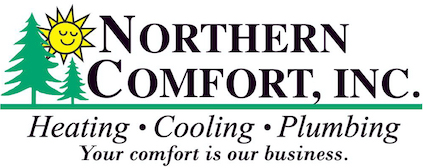
You shouldn’t have to compromise on comfort or empty your wallet to keep your house at a pleasant setting during warm days.
But what is the best setting, exactly? We discuss ideas from energy pros so you can determine the best setting for your family.
Here’s what we advise for the most energy-efficient setting for air conditioning in Mankato area.
Recommended Thermostat Settings for Summer
Most households find setting the thermostat at 72-73 degrees provides ideal comfort. However, if there’s a huge difference between your indoor and outdoor temps, your electricity costs will be bigger.
This is our advice based on the U.S. Department of Energy (DOE) and ENERGY STAR®.
While at home: 78 degrees. While that appears warm, there are methods you can keep your residence refreshing without having the air conditioner on constantly.
Keeping windows and window treatments closed during the day keeps cool air where it should be—inside. Some window solutions, like honeycomb shades or plantation shutters, are made to offer more insulation and enhanced energy conservation.
If you have ceiling fans in your residence, the DOE says you can move thermostat temperatures about 4 degrees hotter without compromising comfort. That’s since they cool with a windchill effect. Because they cool people, not spaces, turn them off when you move from a room.
If 78 degrees still appears too uncomfortable on the surface, try running a trial for about a week. Begin by upping your temperature to 78 degrees while you’re at your residence. Then, gradually decrease it while following the suggestions above. You may be surprised at how refreshed you feel at a hotter temperature setting.
While away: 88 degrees. There’s no need to keep the AC working all day while your residence is unoccupied. Switching the temperature 7–10 degrees hotter can save you anywhere from 5–15% on your electricity bills, according to the DOE.
When you come home, don’t be tempted to switch your thermostat under 78 to cool your residence faster. This isn’t effective and typically results in a higher electrical cost.
A programmable thermostat is a helpful approach to keep your temperature in check, but you have to set programs. If you don’t utilize programs, you risk forgetting to move the set temperature when you leave.
If you need a convenient resolution, consider getting a smart thermostat. This thermostat connects with your phone, so it realizes when you’re at your house and when you’re gone. Then it intuitively adjusts temperature settings for the biggest savings. How much exactly? Typically $180 annually on heating and cooling, according to ENERGY STAR.
Another perk of having a smart thermostat? You can use your phone to watch and regulate temperature settings from nearly anywhere.
While sleeping: Around 70 degrees. While ENERGY STAR suggests 82 degrees, that might be too uncomfortable for the majority of families. The majority of people sleep better when their sleeping space is cold, so that’s why the National Sleep Foundation recommends 60–67 degrees. But that may be too chilly, based on your clothing and blanket preference.
We suggest using a comparable test over a week, moving your temp higher and slowly lowering it to locate the right temperature for your house. On mild nights, you might learn keeping windows open at night and relying on a ceiling fan is a preferable solution than using the AC.
More Ways to Use Less Energy During Warm Weather
There are extra approaches you can conserve money on air conditioning bills throughout warm weather.
- Buy an energy-efficient cooling system. Central air conditioners only work for about 12–15 years and become less efficient as they become older. A new air conditioner can keep your residence more comfortable while keeping cooling bills low.
- Book yearly air conditioner maintenance. Routine air conditioner maintenance keeps your equipment operating smoothly and may help it work at better efficiency. It could also help extend its life expectancy, since it helps pros to pinpoint seemingly insignificant problems before they create a major meltdown.
- Put in new air filters often. Use manufacturer instructions for changing your air filter. A dusty filter can cause your system to short cycle, or run too often, and increase your energy.
- Check attic insulation levels. Just about 90% of houses in the USA don’t have proper insulation, according to the Insulation Institute. Most southern climates require 13–14” of attic insulation, while northern climates should have 16–18”.
- Have your ductwork examined. Ductwork that has come apart over time can leak conditioned air into your attic, walls or crawl space. This can create major comfort problems in your home, including hot and cold spots.
- Seal openings, doors and windows. Keep warm air where it should be by plugging cracks. You can also caulk or weather strip doors to trap more conditioned air inside.
Conserve More Energy This Summer with Northern Comfort Inc
If you need to use less energy this summer, our Northern Comfort Inc pros can provide assistance. Reach us at 507-387-6596 or contact us online for more information about our energy-saving cooling solutions.


